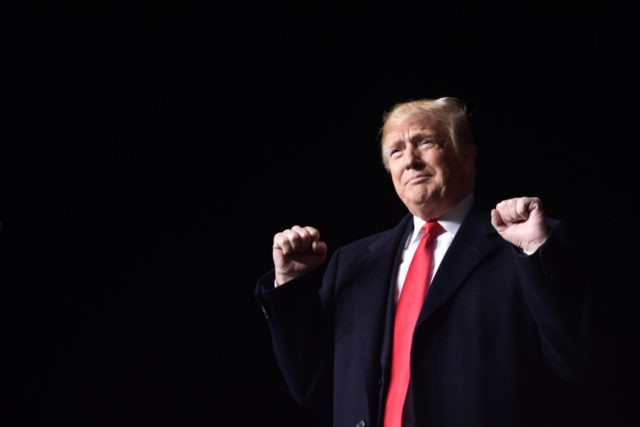The U.S. economy has expanded far more under President Donald Trump than economists expected before the election of 2016. As a result, the government’s tax revenue has barely been reduced by the deep cuts to corporate and personal income tax rates enacted last year.
While it may be too much to claim that the tax cuts alone have paid for themselves–raised growth enough to neutralize any revenue losses from lower rates–an only slightly less audacious claim is true. The Trump economic package has led to much higher growth than expected and, as a result, it has very nearly paid for the tax cuts.
The gross domestic product of the U.S. was $18.7 trillion in 2016. Prior to the election, the Federal Reserve estimated that the economy would grow just two percent in 2017 and 2018 before falling to 1.8 percent in 2019. If taxes rates remained unchanged, so that the government continued to collect around 17.4 percent of GDP as tax revenue, the government would have collected $10.15 trillion in taxes between 2017 and the end of 2019.
The economy, however, has grown much more than expected. In 2017, the economy expanded 2.3 percent. As of September, the Fed said it expects the economy to expand 3.1 percent in 2018 (and that was before the government announced GDP expanded by more than expected in the third quarter of this year). The Fed now expects GDP to expand 2.5 percent in 2019, which is seven-tenths of a percentage point higher–a 39 percent change.
This much higher growth means that even though tax rates are lower, tax collections have barely budged. Using actual GDP from 2017 and the Fed forecasts for 2018 and 2019, while lowering tax revenue to 16.5 percent of GDP due to the tax cuts, expected tax revenues over the period will be $10.05 trillion over the three year period. That’s less than 1 percent less than they would have been if pre-Trump growth and taxes rates had held.
It is always hard to tell how much of the additional growth is due to tax cuts rather than other economic policies, such as tariffs that boost domestic incomes or regulatory reforms encouraging business expansion. Tax cuts, for example, likely boosted growth before they were even enacted because businesses anticipated the Republican Congress would pass some form of Trump’s promised corporate tax cuts. It’s probably better to look at the economic package as a whole and compare what it has done to the government budget.
And the numbers thus far are clear: the growth generated by Trump’s economic policies are very nearly paying for the tax cuts.

COMMENTS
Please let us know if you're having issues with commenting.